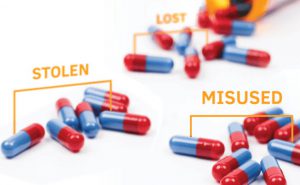 “A Hidden Epidemic” was the cover story in last month’s issue of HR magazine. The article discusses the enormous toll prescription painkiller abuse is taking on the workplace. Author Dori Meinert interviewed several human resources professionals to gain perspective on why employees are grappling with addiction. Many employees may not seek help because they fear losing their jobs or feel shame and embarrassment about the social stigma associated with being dependent on prescription drugs.
“A Hidden Epidemic” was the cover story in last month’s issue of HR magazine. The article discusses the enormous toll prescription painkiller abuse is taking on the workplace. Author Dori Meinert interviewed several human resources professionals to gain perspective on why employees are grappling with addiction. Many employees may not seek help because they fear losing their jobs or feel shame and embarrassment about the social stigma associated with being dependent on prescription drugs.
In the article, Don Teater, Medical Advisor to the National Safety Council, says that employers lack the information they need to address the issue and, in many cases, do not have a written policy that includes medications that may be used while at work. As a result, the National Safety Council created the Prescription Drug Employer Kit as a free download to help better educate employers.
The rise in pain medication abuse is also increasing healthcare and workers’ compensation costs. According to a study in Pain Medicine cited by Meinert, “Nationwide, prescription painkiller abuse is costing employers an estimated $25.5 billion a year in missed workdays and lost productivity.” Here are some additional facts from the article:
- Drug overdoses—predominantly from opioid painkillers such as OxyContin and Percocet—now exceed car crashes as the leading cause of unintentional death in the U.S.
- Even when no physical cause for pain can be found, doctors feel obligated to not permit their patients to be in pain so they prescribe opioids.
- Workers who take opioids for longer than three months usually do not return to work.
- Random drug testing can deter employees from getting started on opioid painkillers when safer alternatives are available.
- New guidelines for federal workers have been proposed that require testing for prescription opioid painkillers.
It’s important to inform your employees about the potential risks of prescription painkillers and to train your supervisors to recognize the signs and symptoms of abuse. The article suggests that HR professionals better understand their drug testing policies and employee assistance program (EAP) options and urge employees to ask their doctors how painkillers will affect their ability to carry out specific work duties.
For more information about opiate testing, visit our website.
 Your Privacy Choices
|
Privacy Notices
|
Terms
|
Language Assistance / Non-Discrimination Notice | Asistencia de Idiomas / Aviso de no Discriminación | 語言協助 / 不䈚視通知
Your Privacy Choices
|
Privacy Notices
|
Terms
|
Language Assistance / Non-Discrimination Notice | Asistencia de Idiomas / Aviso de no Discriminación | 語言協助 / 不䈚視通知



















In the article, Don Teater, Medical Advisor to the National Safety Council, says that employers lack the information they need to address the issue and, in many cases, do not have a written policy that includes medications that may be used while at work. As a result, the National Safety Council created the Prescription Drug Employer Kit as a free download to help better educate employers.
The rise in pain medication abuse is also increasing healthcare and workers’ compensation costs. According to a study in Pain Medicine cited by Meinert, “Nationwide, prescription painkiller abuse is costing employers an estimated $25.5 billion a year in missed workdays and lost productivity.” Here are some additional facts from the article:
It’s important to inform your employees about the potential risks of prescription painkillers and to train your supervisors to recognize the signs and symptoms of abuse. The article suggests that HR professionals better understand their drug testing policies and employee assistance program (EAP) options and urge employees to ask their doctors how painkillers will affect their ability to carry out specific work duties.
For more information about opiate testing, visit our website.